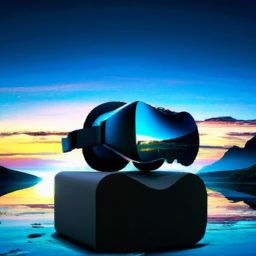Music Industry Trends
You’re about to embark on a fascinating journey through the ever-evolving landscape of the music industry. In this article, we’ll take a closer look at the latest trends shaping the way music is created, consumed, and shared. From the surge of streaming platforms to the rise of independent artists, you’ll discover how technology and shifting consumer preferences are revolutionizing the way we experience music. So, get ready to unlock the secrets behind the music industry’s most captivating trends and gain a deeper understanding of this vibrant and dynamic world.

Table of Contents
Streaming Services
Growth in Subscription-based Services
Streaming services have revolutionized the music industry in recent years, with a significant shift towards subscription-based models. The ease of access and affordability offered by platforms such as Spotify, Apple Music, and Amazon Music has resulted in a rapid increase in the number of subscribers. Music lovers now have the option to enjoy a vast library of songs from various artists and genres for a monthly fee, eliminating the need for physical music media.
Increased Competition and Consolidation
As the popularity of streaming services continues to grow, competition among various platforms has become increasingly fierce. This competition has led to consolidation within the industry, with larger companies acquiring smaller ones to gain a competitive edge. The acquisition of platforms like Tidal by Twitter, and SiriusXM’s purchase of Pandora, are examples of this consolidation trend. Moreover, competition has also led to more aggressive marketing strategies and exclusive content deals, as streaming services strive to differentiate themselves and attract new subscribers.
Emergence of User-generated Content Platforms
Another interesting trend in the music industry is the rise of user-generated content platforms, such as SoundCloud and YouTube. These platforms have allowed aspiring musicians to showcase their talents to a global audience without the need for traditional music industry gatekeepers. User-generated content platforms have empowered independent artists and enabled them to build a fanbase and even monetize their music through advertising and sponsorships. This trend has disrupted the traditional record label model and opened up new avenues for creativity and collaboration in the music industry.
Digital Music Sales
Decline of Physical Sales
The rise of digital downloads and streaming services has led to a steady decline in physical music sales. CDs and vinyl records, once the primary means of music consumption, have become increasingly less popular with the advent of digital music platforms. Music lovers now prefer the convenience and portability offered by digital formats, which has had a profound impact on the overall sales of physical music media. Artists and record labels have had to adapt their strategies to focus on digital distribution and sales in order to remain relevant in today’s music market.
Rise of Digital Downloads
With the proliferation of smartphones, digital downloads have become the go-to method for consumers to purchase and own music. Online marketplaces such as iTunes and Bandcamp have made it easier than ever for fans to directly support their favorite artists by purchasing their music digitally. This trend has allowed independent artists and smaller record labels to thrive by reaching a global audience without the need for physical distribution. Additionally, digital downloads have also offered more flexibility for music fans, who can now curate their own music libraries and listen to their favorite songs offline.
Digital Piracy Challenges
While digital music sales have surged, the music industry continues to face challenges from digital piracy. Illegally downloading or streaming copyrighted music remains a significant concern for artists and record labels, as it deprives them of revenue. However, efforts have been made to combat piracy, such as the enforcement of stricter copyright laws and the implementation of anti-piracy technologies. Despite these efforts, piracy remains a persistent issue, highlighting the need for continued innovation and collaboration between the music industry and technology companies to ensure the fair compensation of artists for their work.
Live Music
Increasing Popularity of Music Festivals
Music festivals have experienced a significant surge in popularity over the past decade. With a lineup of diverse artists and immersive experiences, music festivals have become a must-attend for music enthusiasts worldwide. From iconic events like Coachella and Glastonbury to niche festivals focusing on specific genres, there is something for everyone. The growth of music festivals has not only provided a platform for established acts to reach a larger audience but has also given emerging artists an opportunity to showcase their talents and gain exposure.
Growth of Live Streaming Concerts
In recent years, live streaming concerts have gained traction as a way for artists to connect with fans who cannot attend in-person events. Platforms such as YouTube, Facebook Live, and Twitch have made it possible for artists to broadcast their performances worldwide, reaching a global audience. Live streaming concerts offer a unique and intimate experience for fans, allowing them to enjoy live music from the comfort of their own homes. This trend has gained even more prominence during the COVID-19 pandemic when traditional concert venues have been closed, making live streaming concerts a vital source of income for many artists.
Rise of Virtual Reality Experiences
Virtual reality (VR) technology has opened up new possibilities in the live music experience. Using VR headsets, music fans can now immerse themselves in virtual concerts and festivals, offering a sense of presence and interactivity. VR concerts provide a more personalized and interactive experience, allowing fans to explore virtual venues, interact with virtual avatars of their favorite artists, and even have front-row seats from the comfort of their own homes. While still in its early stages, the rise of virtual reality experiences in the music industry promises to revolutionize the way fans engage with live music.
Artificial Intelligence
AI-assisted Music Composition
Artificial intelligence (AI) technology has made significant advancements in the field of music composition. AI algorithms can analyze vast amounts of musical data to generate original compositions, imitating different styles and genres. This has the potential to revolutionize the creative process for musicians, providing them with new sources of inspiration and innovative ideas. While AI-assisted music composition currently serves as a helpful tool for artists, the debate over the role of AI in the creation of art continues, with concerns over the authenticity and emotional depth of AI-generated music.
Enhanced Music Recommendations and Discovery
AI-powered algorithms play a crucial role in recommending music to listeners, assisting them in discovering new artists and genres based on their preferences and listening history. Platforms like Spotify and YouTube use machine learning techniques to analyze user data and generate personalized playlists and recommendations. This has significantly enhanced the music discovery process, exposing listeners to a wider range of music and promoting a more diverse and inclusive music culture. However, the dominance of algorithms in music recommendations raises questions about the impact on artistic diversity and the potential for echo chambers in music consumption.
Copyright and Licensing Challenges
The utilization of AI technology in music raises complex copyright and licensing challenges. As AI algorithms analyze and create music, issues of ownership and copyright become more nuanced. Who owns the rights to AI-generated compositions? How do artists and record labels ensure fair compensation for their work? These questions require careful consideration and the development of new frameworks and licensing agreements that account for the role of AI in the music industry. Balancing the advancement of AI technology with the fair protection of artists’ rights will be crucial in shaping the future of AI in the music industry.
Social Media and Online Communities
Influence of Social Media Platforms on Music Promotion
Social media platforms have had a profound impact on music promotion, providing artists with direct access to their fans and allowing for more immediate and personal engagement. Platforms like Instagram, Twitter, and TikTok have become instrumental in building a fanbase, sharing music, and promoting upcoming releases. Artists can now leverage the power of social media to create viral moments, collaborate with influencers, and connect with fans on a more personal level. The ability to share music instantly has democratized the promotion process, enabling even independent artists to gain widespread recognition.
Crowdfunding and Fan Engagement
Social media has also facilitated the rise of crowdfunding as a viable source of financing for musicians. Artists can directly engage with their fans and offer them the opportunity to support their projects through platforms such as Kickstarter and Patreon. Crowdfunding campaigns not only provide financial support but also help strengthen the relationship between artists and their fans, fostering a sense of community and shared ownership. This direct interaction and engagement have empowered artists to maintain creative control over their work and pursue projects that may not be feasible under traditional record label contracts.
Online Music Collaboration and Distribution
The internet has opened up limitless possibilities for online music collaboration and distribution. Digital platforms such as SoundBetter and BandLab allow musicians from different parts of the world to collaborate seamlessly, sharing ideas and creating music together. This has led to the emergence of diverse and dynamic collaborations that transcend geographical boundaries. Moreover, online distribution platforms like DistroKid and TuneCore have enabled independent artists to release their music globally without the need for a traditional record label. This democratization of music creation and distribution has further empowered independent artists and fostered a vibrant online music community.
Music Discovery and Curation
Importance of Music Playlists
Music playlists have become an essential feature in the digital music landscape. Curated playlists on streaming services have the power to shape listeners’ music preferences and introduce them to new artists and genres. Playlists created by both human curators and AI algorithms have become a valuable tool for music discovery, catering to different moods, activities, and genres. The inclusion of an artist’s song in a popular playlist can significantly boost their visibility and increase their chances of reaching new fans. Moreover, artists themselves can create their own playlists, showcasing their musical influences and offering deeper insights into their creative process.
Impact of Algorithms on Content Selection
While music algorithms have greatly enhanced the music discovery process, there are concerns about the potential homogenization and filtering of content. As algorithms recommend music based on user preferences, there is a risk of narrowing exposure to new artists and genres, leading to a lack of diversity in music consumption. Additionally, algorithms tend to prioritize popular or mainstream tracks, potentially overshadowing lesser-known artists. Striking a balance between personalized recommendations and ensuring a broad range of music is exposed to listeners remains a challenge that the music industry must address.
Music Recommendations by Influencers
Influencers, whether they are popular artists or tastemakers with a large following, have the power to shape music trends and introduce listeners to new artists. Endorsements and recommendations from influencers can significantly impact an artist’s career, leading to increased visibility and fanbase growth. Platforms like TikTok have become particularly influential in this regard, with viral challenges and trends catapulting songs and artists to stardom. However, the reliance on influencers for music recommendations also raises questions about the potential for biased endorsements and the exclusion of artists who do not fit into mainstream trends.
Diversification of Revenue Streams
Merchandising and Brand Partnerships
Artists and record labels have increasingly turned to merchandise sales to diversify their revenue streams. From t-shirts and posters to exclusive limited-edition items, merchandise allows fans to show their support for their favorite artists while providing an additional source of income. Brand partnerships have also become a popular way for artists to expand their reach and generate revenue. Collaborations with clothing brands, beverage companies, and technology companies not only provide financial benefits but also give artists opportunities for cross-promotion and reaching new audiences.
Sync Licensing and Placements
Sync licensing, the process of licensing music for use in advertisements, film, television, and other media, has emerged as a valuable revenue stream for artists. A song featured in a popular commercial or movie can expose an artist to a wide audience and generate substantial royalties. The demand for sync licensing has grown as advertisers and media producers seek unique sounds to enhance their content and create emotional connections with audiences. This trend has provided artists with new opportunities for exposure and income, especially for those who may not have achieved mainstream success.
Monetization of User-generated Content
The rise of user-generated content on platforms like YouTube and TikTok has presented both opportunities and challenges for the music industry. While unauthorized use of copyrighted music in user-generated content can be a concern, platforms have developed systems to identify and monetize these instances. Content creators can now obtain licenses to use copyrighted music, ensuring fair compensation for artists. This innovative approach to licensing user-generated content has created a win-win situation, allowing artists to generate revenue from the widespread use of their music while giving content creators the freedom to express themselves creatively.
Independent Artists and DIY Culture
Increasing Opportunities and Empowerment
Independent artists have experienced a surge in opportunities and empowerment in recent years. With the democratization of music production and distribution, artists no longer need to rely solely on traditional record labels to release their music. The rise of digital platforms has provided independent artists with the tools and resources to create and distribute their work globally, enabling them to reach a wide audience without the need for major label backing. This DIY culture has fostered an environment of creativity and self-expression, giving artists the freedom to pursue their artistic vision on their own terms.
Direct-to-Fan Relationship Building
The ability to connect directly with fans has become a cornerstone of success for independent artists. Social media platforms and email marketing have allowed artists to build meaningful relationships with their audience, offering a behind-the-scenes look into their creative process and involving fans in their journey. Artists can now communicate directly with fans, gain valuable feedback, and even involve them in decision-making processes such as album artwork selection or choosing tour locations. This direct-to-fan relationship building has created a sense of community and loyalty, providing independent artists with a dedicated and supportive fanbase.
Challenges of Financial Sustainability
While independent artists have gained more control and opportunities, financial sustainability remains a key challenge. Without the support and resources of major record labels, artists have to navigate the complexities of funding their projects, promoting their music, and generating income. Crowdfunding, merchandise sales, and sync licensing have provided alternative revenue streams, but artist livelihoods can still be precarious. Balancing the need for artistic independence with financial stability requires careful planning, strategic partnerships, and ongoing innovation in the monetization of music.
Emerging Markets
Growth of Streaming in Developing Countries
Streaming services have experienced exponential growth in developing countries, opening up new markets and opportunities for the music industry. As internet access becomes more widespread, platforms such as Spotify and Apple Music have expanded their reach to regions that were previously underserved. This growth has not only allowed artists from these countries to showcase their music on a global stage but has also provided local listeners with access to a diverse range of music from around the world. The expansion into emerging markets has the potential to reshape the global music landscape and foster greater cultural exchange.
Adoption of Local Music Styles and Genres
With the growth of streaming services in emerging markets, there has been a renewed interest in traditional and local music styles. Streaming platforms have provided a platform for indigenous artists to share their music, preserving cultural heritage and promoting local artistry. This has led to the discovery and appreciation of diverse genres and musical traditions, breaking down cultural barriers and promoting cross-cultural collaboration. The adoption of local music styles and genres by global audiences has enriched the music industry and fostered a sense of cultural inclusivity.
Expansion of Global Music Markets
The expansion of streaming services into emerging markets has not only empowered local artists but has also created new opportunities for international artists to tap into previously untapped markets. The ability to reach a global audience has become more accessible, allowing artists to connect with fans from different cultures and backgrounds. This expansion of global music markets has led to a cross-pollination of musical styles and an increased appreciation for diverse genres. Artists from around the world now have the opportunity to find success in markets they may not have previously considered, further blurring geographical boundaries in the music industry.
Data Analytics and Insights
Utilization of Big Data for Decision Making
The music industry has embraced the power of data analytics to inform decision-making processes. By analyzing vast amounts of data on listening habits, user preferences, and market trends, artists, record labels, and streaming platforms can make informed decisions about marketing strategies, release schedules, and content creation. Big data analytics has provided valuable insights into consumer behavior, allowing for more targeted marketing campaigns and personalized music experiences. The ability to harness data effectively has become a competitive advantage in an industry that values innovation and staying ahead of evolving trends.
Predictive Analytics for A&R
Predictive analytics has transformed the process of artist and repertoire (A&R) selection, traditionally based on gut instincts and personal connections. By analyzing data on streaming numbers, social media engagement, and audience demographics, record labels and talent scouts can identify emerging artists with potential star power. This data-driven approach to A&R increases the likelihood of signing artists who have a built-in fanbase and market demand. However, the reliance on data also raises questions about the potential homogenization of music and the exclusion of artists who may not fit into predefined metrics.
Personalized Music Experiences
Data analytics has enabled the creation of personalized music experiences for listeners. By understanding individual preferences and consumption patterns, streaming services can curate personalized playlists and recommendations that cater to each listener’s unique tastes. This has transformed the way people engage with music, allowing for a more tailored and immersive experience. Personalization extends beyond just music recommendations, with algorithms also influencing concert suggestions, artist recommendations, and even mood-based playlists. The ability to customize music experiences based on individual preferences has revolutionized the way music is discovered, consumed, and enjoyed.

